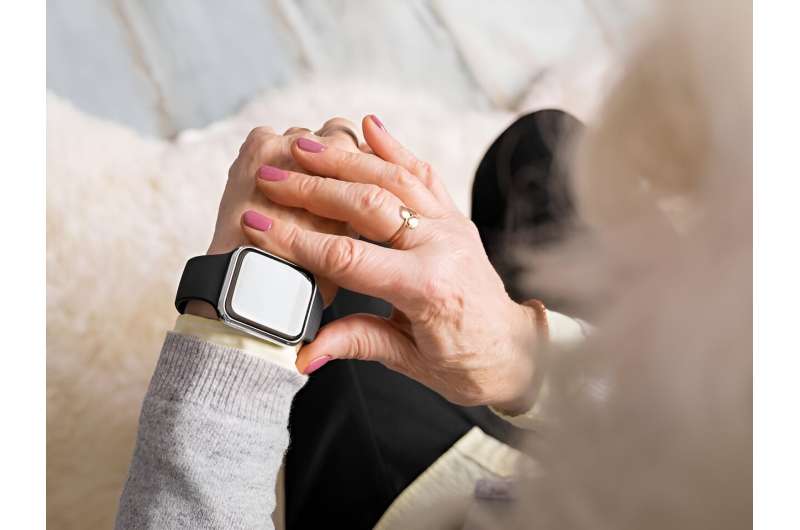
Wearable devices like smartwatches continually track physical activity, urging folks to take more daily steps for their health.
Now, a new study suggests this gentle technological nagging could be of great benefit to people whose hearts are giving out.
Heart failure patients who get between 1,000 and 5,000 steps a day have significantly improved symptoms and fewer physical limitations than those who walk less, according to researchers.
They also found that if heart patients increase their step counts, they appear to experience a clinically important improvement in symptom control and physical function.
These results show the potential usefulness of wearable devices in helping people manage heart failure, said senior researcher Dr. Brahmajee Nallamothu, a professor of cardiology at the University of Michigan Medical School.
“I can imagine situations where these devices could potentially help us deliver advice or recommendations,” Nallamothu said. “By tracking how many steps a patient has taken, we might be able to use that information and intervene a little bit to say, you haven’t been moving as much this week as you were the week before. There might be lots of things going on in your life, but it’s really nice outside. Maybe today or tomorrow is a good day for a walk.”
Heart failure occurs when the heart becomes too weak or stiff to pump sufficient blood out to the body. Patients develop fatigue and shortness of breath, making it extremely difficult to perform everyday activities like walking, climbing stairs or carrying groceries.
For the study, Nallamothu and his colleagues analyzed data on 425 heart failure patients who participated in a clinical trial for a diabetes drug called canagliflozin (Invokana).
As part of the trial, the patients were provided at Fitbit Versa 2 to track their daily step count and physical activity. This data was uploaded to a compatible smartphone and saved for analysis.
Results showed that heart failure patients who walked 2,000 steps per day had better symptom and physical limitation scores than those who walked 1,000 steps daily.
Further, those patients who increased their step count over the 12-week clinical trial appeared to improve their physical limitation scores, compared to those who didn’t walk more, the study found.
The findings were published July 26 in the journal JACC: Heart Failure.
“I think this study gives us a promising suggestion as to how people with heart failure could stay relatively healthy,” said cardiovascular epidemiologist Frederick Ho, a lecturer in public health with the University of Glasgow. “The condition does affect people’s ability to stay mobile, but if people could try to walk a bit more, it is possible that their symptoms could be better managed.”
However, there were limits. Walking more than 5,000 steps did not appear to give heart failure patients any additional health benefits.
Previous studies have shown that gradual increases in physical activity can help patients with heart failure, Nallamothu said.
“It’s one of the reasons why programs like cardiac rehabilitation are oftentimes recommended for patients with heart failure,” he said.
This new study shows the promise of wearable devices to both encourage more walking and to gather better data about the daily lives of patients, Nallamothu said.
“I think the hope of many of these tools is that they can start to give us windows into patients’ lives over a longer period of time,” Nallamothu said. “What gets me excited when I think about smartwatches and wearables contributing to clinical care is when we can think about the opportunity for us to start learning about patients when they’re outside of a doctor’s office—when they’re at home, when they’re at work, when they’re on vacation, when they’re traveling. And not just over a week or months, but over years.”
But Dr. Maya Guglin, chair of the American College of Cardiology’s Heart Failure and Transplant Council, warned not to read too much into this study because the association between daily steps and heart failure could run the other direction.
In other words, people who have fewer symptoms and less disability may be more able and more likely to take in more daily steps, rather than the steps improving their health, she noted.
“It’s completely predictable. People with higher quality of life walk more,” said Guglin, medical director of the Indiana University Advanced Heart Failure Program. “If they feel better, if they have less symptoms, they walk more. A greater number of steps, a greater number of stairs and so on.”
More information:
The American Heart Association has more about heart failure.
Jessica R. Golbus et al, Association Between Wearable Device Measured Activity and Patient-Reported Outcomes for Heart Failure, JACC: Heart Failure (2023). DOI: 10.1016/j.jchf.2023.05.033
Copyright © 2023 HealthDay. All rights reserved.
Source: Read Full Article





